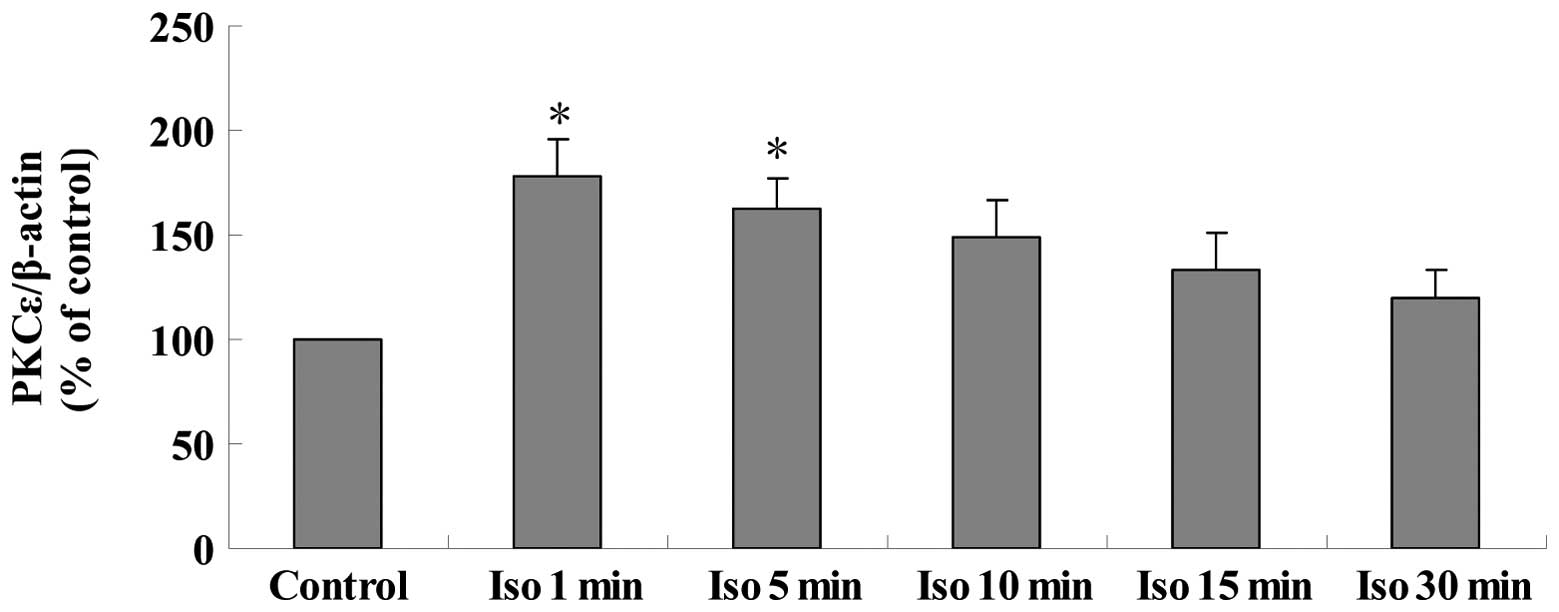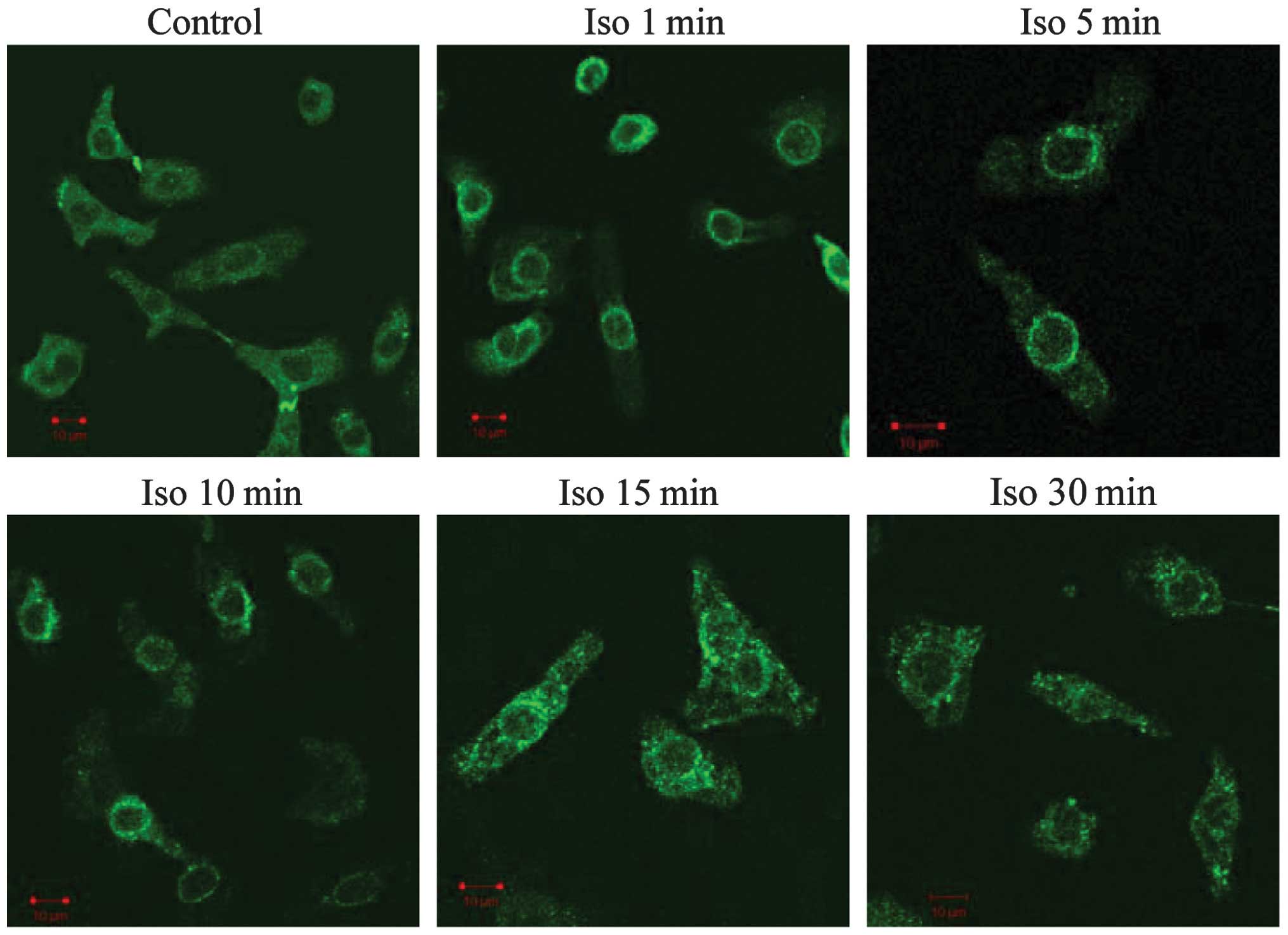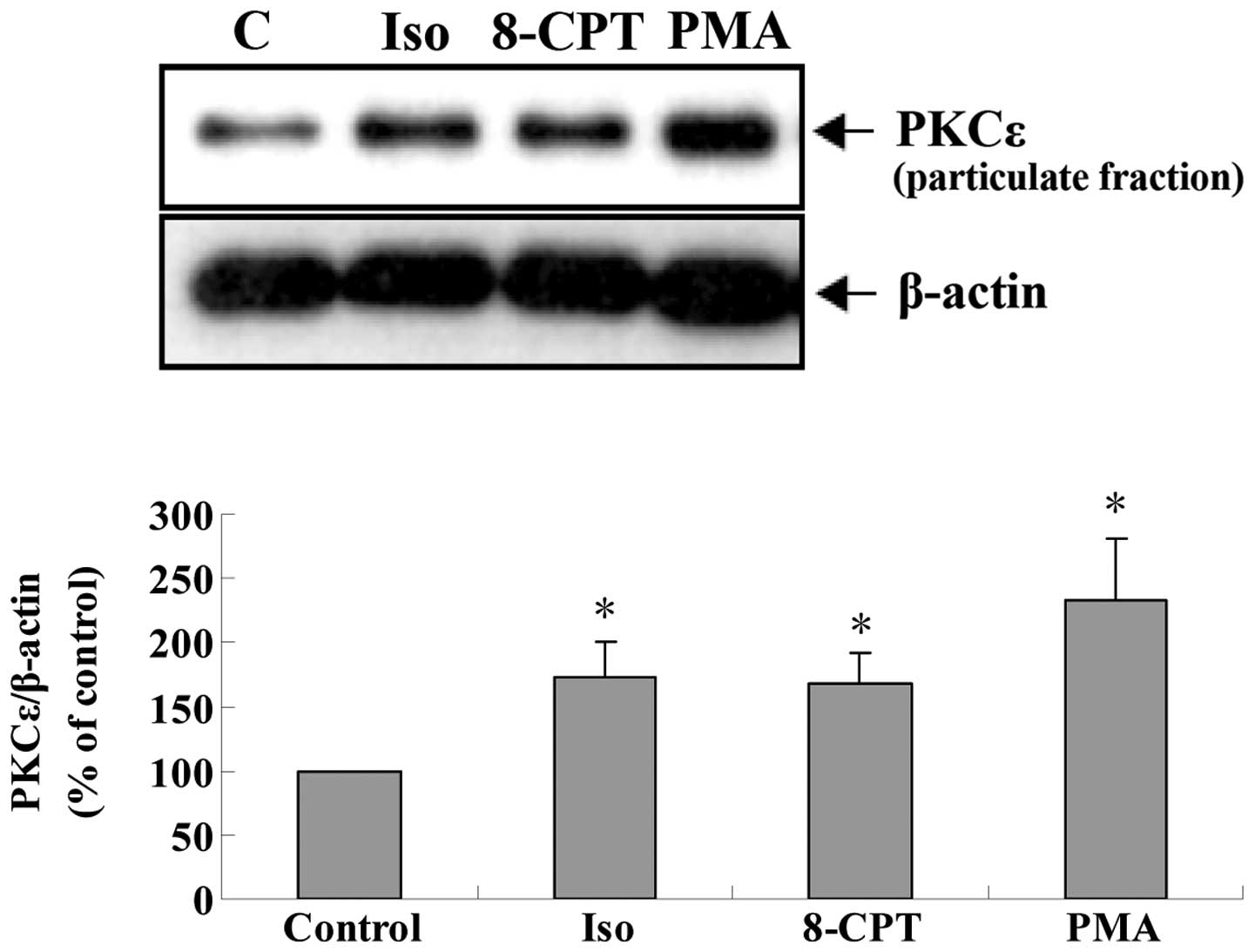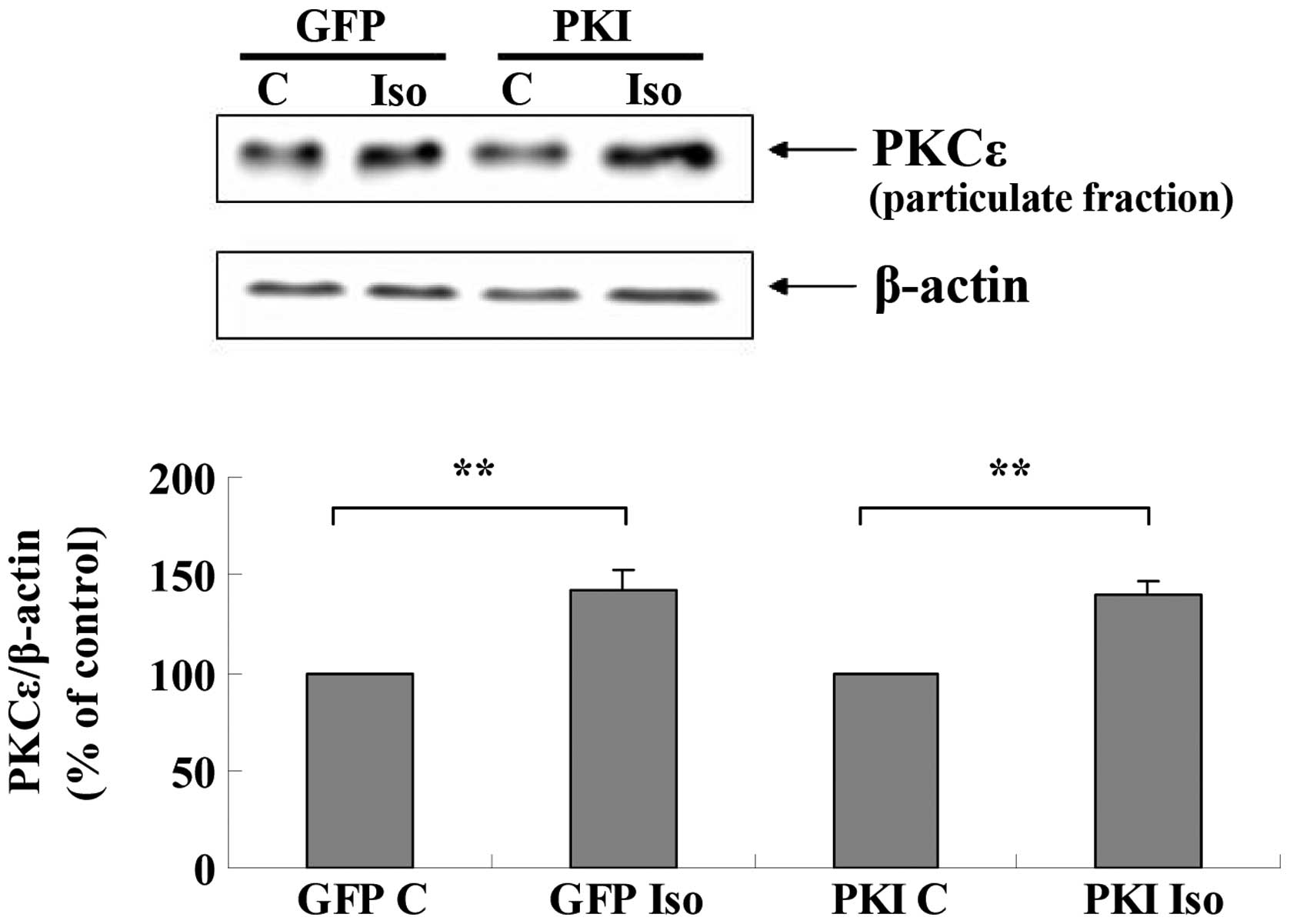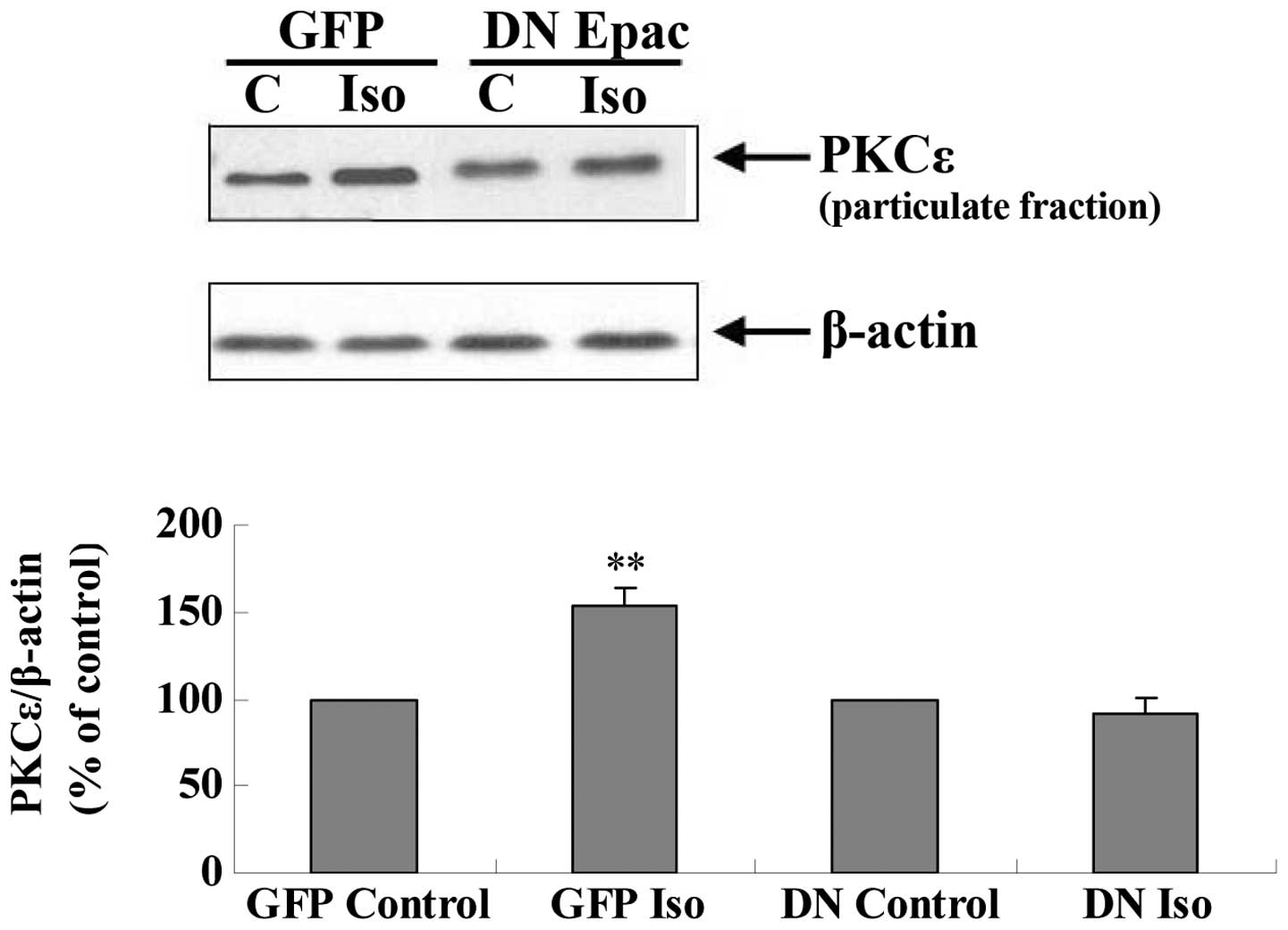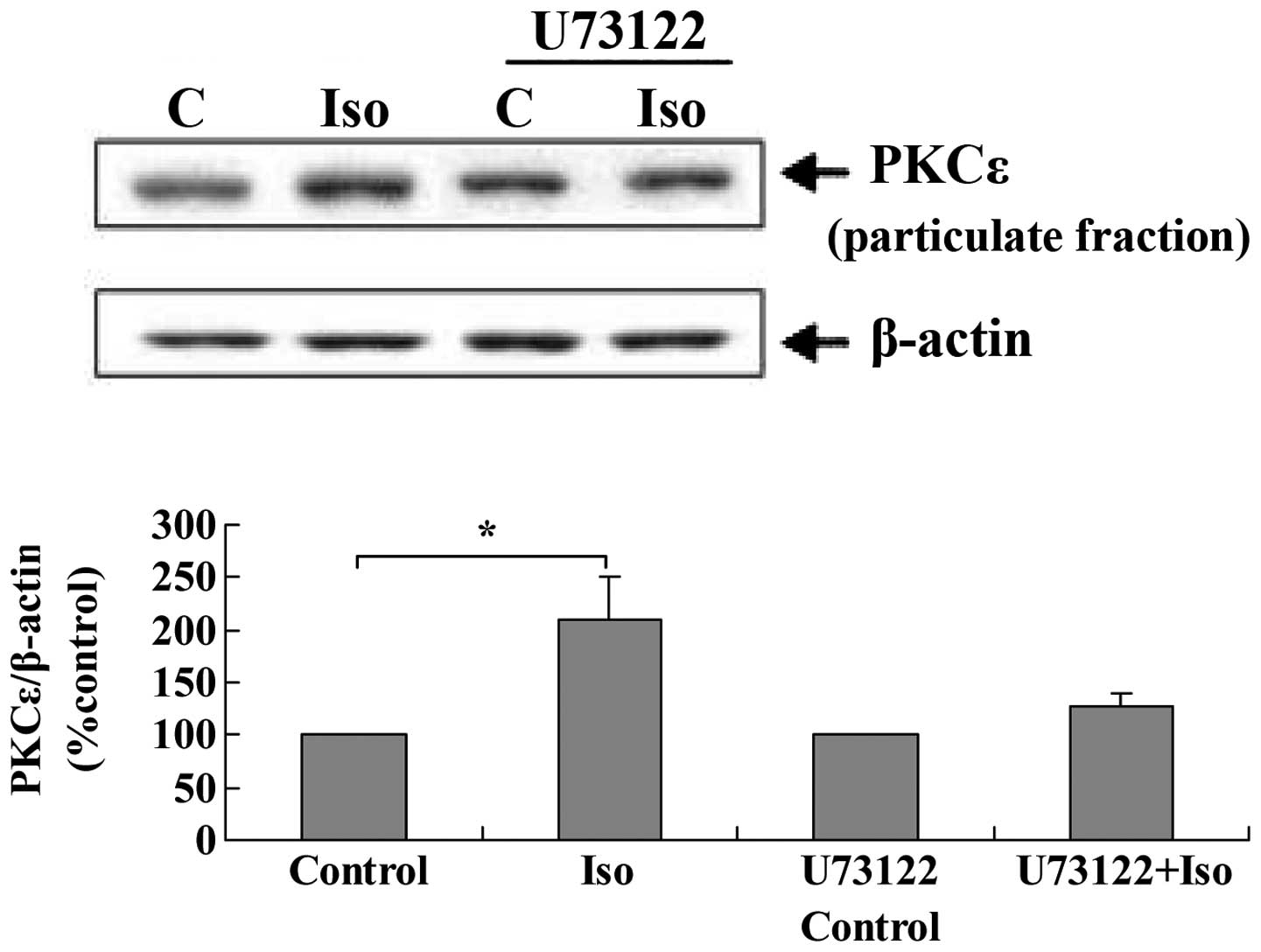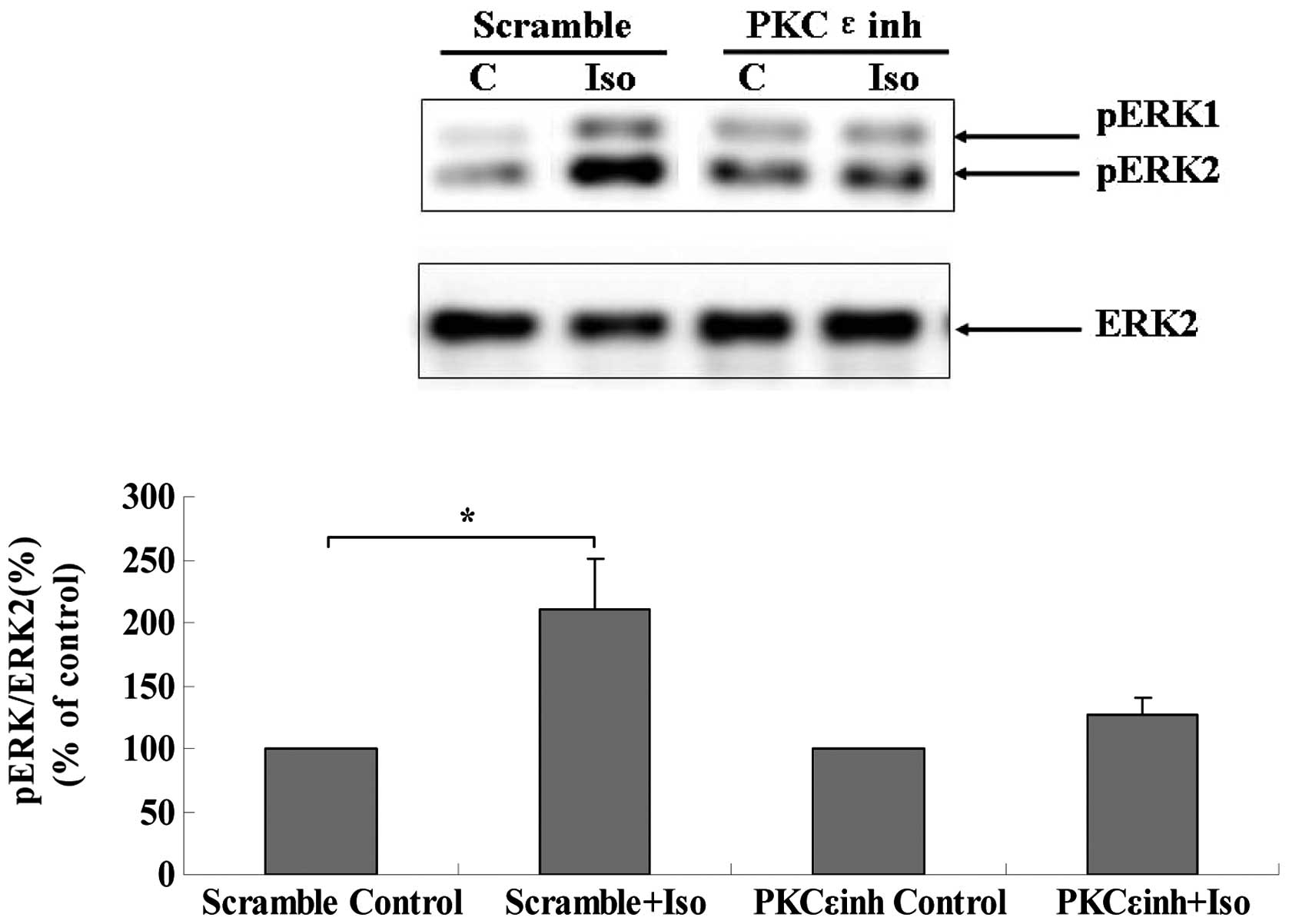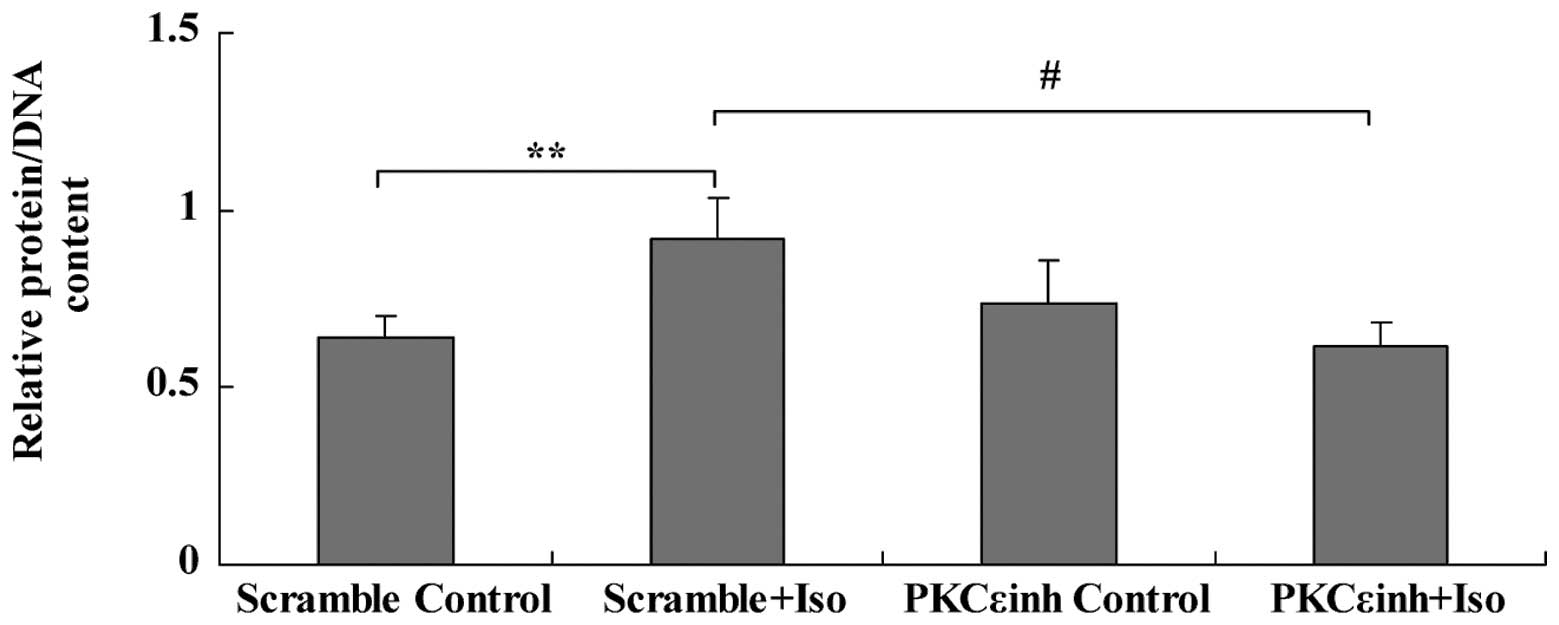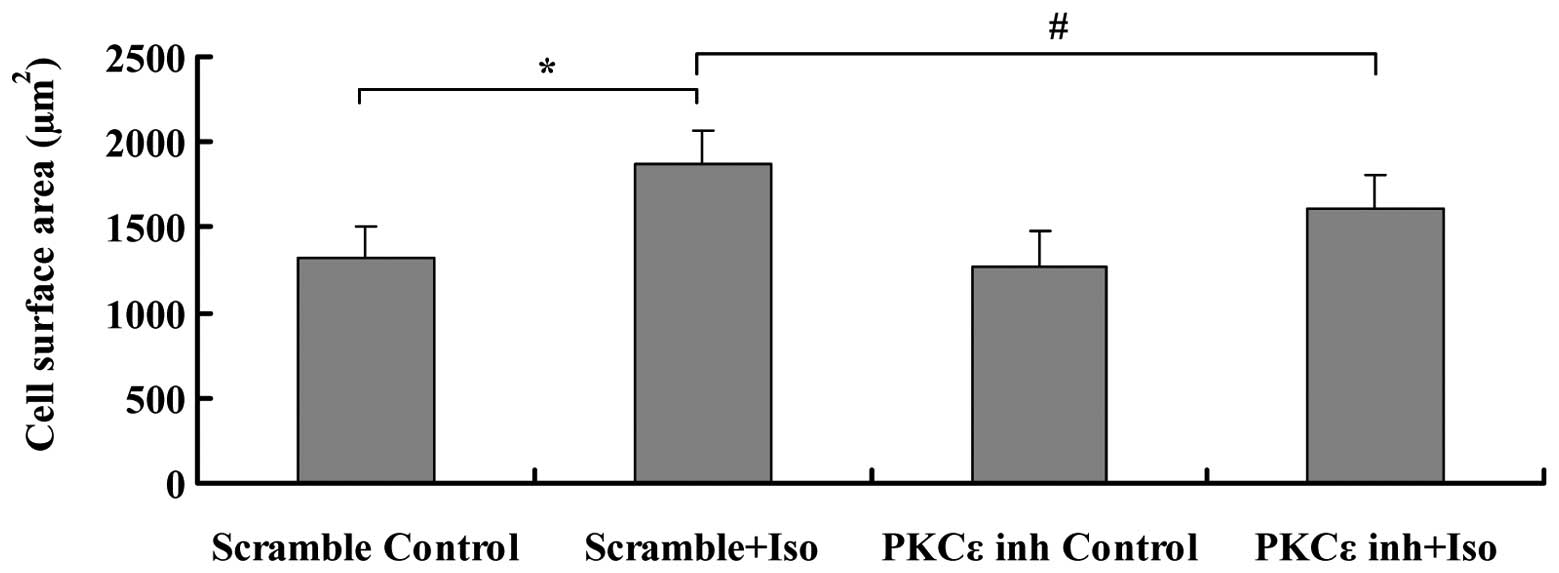|
1
|
Lorell BH and Carabello BA: Left
ventricular hypertrophy: pathogenesis, detection, and prognosis.
Circulation. 102:470–479. 2000. View Article : Google Scholar : PubMed/NCBI
|
|
2
|
Diwan A and Dorn GW II: Decompensation of
cardiac hypertrophy: cellular mechanisms and novel therapeutic
targets. Physiology (Bethesda). 22:56–64. 2007. View Article : Google Scholar
|
|
3
|
Artham SM, Lavie CJ, Milani RV, Patel DA,
Verma A and Ventura HO: Clinical impact of left ventricular
hypertrophy and implications for regression. Prog Cardiovasc Dis.
52:153–167. 2009. View Article : Google Scholar : PubMed/NCBI
|
|
4
|
Vakili BA, Okin PM and Devereux RB:
Prognostic implications of left ventricular hypertrophy. Am Heart
J. 141:334–341. 2001. View Article : Google Scholar : PubMed/NCBI
|
|
5
|
Frey N, Katus HA, Olson EN and Hill JA:
Hypertrophy of the heart a new therapeutic target? Circulation.
109:1580–1589. 2004. View Article : Google Scholar : PubMed/NCBI
|
|
6
|
Dorn GW IInd: Adrenergic pathways and left
ventricular remodeling. J Card Fail 8 Suppl. 6:370–373. 2002.
View Article : Google Scholar
|
|
7
|
Barki-Harrington L, Perrino C and Rockman
HA: Network integration of the adrenergic system in cardiac
hypertrophy. Cardiovasc Res. 63:391–402. 2004. View Article : Google Scholar : PubMed/NCBI
|
|
8
|
Wang W, Zhu W, Wang S, Yang D, Crow MT,
Xiao RP and Cheng H: Sustained β1-adrenergic stimulation modulates
cardiac contractility by ca2+/calmodulin kinase
signaling pathway. Circ Res. 95:798–806. 2004. View Article : Google Scholar : PubMed/NCBI
|
|
9
|
Movsesian MA and Bristow MR: Alterations
in cAMP-mediated signaling and their role in the pathophysiology of
dilated cardiomyopathy. Curr Top Dev Biol. 68:25–48. 2005.
View Article : Google Scholar : PubMed/NCBI
|
|
10
|
Lohse MJ, Engelhardt S and Eschenhagen T:
What is the role of β-adrenergic signaling in heart failure? Circ
Res. 93:896–906. 2003. View Article : Google Scholar : PubMed/NCBI
|
|
11
|
Osadchii OE: Cardiac hypertrophy induced
by sustained beta-adrenoreceptor activation: pathophysiological
aspects. Heart Fail Rev. 12:66–86. 2007. View Article : Google Scholar : PubMed/NCBI
|
|
12
|
Kawasaki H, Springett GM, Mochizuki N,
Toki S, Nakaya M, Matsuda M, Housman DE and Graybiel AM: A family
of camp-binding proteins that directly activate rap1. Science.
282:2275–2279. 1998. View Article : Google Scholar : PubMed/NCBI
|
|
13
|
de Rooij J, Zwartkruis FJ, Verheijen MH,
Cool RH, Nijman SM, Wittinghofer A and Bos JL: Epac is a rap1
guanine-nucleotide-exchange factor directly activated by cyclic
AMP. Nature. 396:474–477. 1998. View
Article : Google Scholar : PubMed/NCBI
|
|
14
|
Schmidt M, Evellin S, Weernink PA, Von
Dorp F, Rehmann H, Lomasney JW and Jakobs KH: A new phospholipase
C-calcium signalling pathway mediated by cyclic AMP and a rap
GTPase. Nat Cell Biol. 3:1020–1024. 2001. View Article : Google Scholar : PubMed/NCBI
|
|
15
|
Schmidt M, Evellin S, Weernink PA, von
Dorp F, Rehmann H, Lomasney JW and Jakobs KH: A new
phospholipase-C-calcium signalling pathway mediated by cyclic AMP
and a Rap GTPase. Nat Cell Biol. 3:1020–1024. 2001. View Article : Google Scholar : PubMed/NCBI
|
|
16
|
Hucho TB, Dina OA and Levine JD: Epac
mediates a cAMP-to-PKC signaling in inflammatory pain: an isolectin
B4(+) neuron-specific mechanism. J Neurosci. 25:6119–6126. 2005.
View Article : Google Scholar : PubMed/NCBI
|
|
17
|
Oestreich EA, Wang H, Malik S,
Kaproth-Joslin KA, Blaxall BC, Kelley GG, Dirksen RT and Smrcka AV:
Epac-mediated activation of phospholipase Cε plays a critical role
in β-adrenergic receptor-dependent enhancement of Ca2+
mobilization in cardiac myocytes. J Biol Chem. 282:5488–5495. 2007.
View Article : Google Scholar
|
|
18
|
Oestreich EA, Wang H, Malik S, Goonasekera
SA, Blaxall BC, Kelley GG, Dirksen RT and Smrcka AV: Epac and
phospholipase Cε regulate Ca2+ release in the heart by
activation of protein kinase Cε and calcium-calmodulin kinase II. J
Biol Chem. 284:1514–1522. 2009. View Article : Google Scholar :
|
|
19
|
Churchill E, Budas G, Vallentin A,
Koyanagi T and Mochly-Rosen D: PKC isozymes in chronic cardiac
disease: possible therapeutic targets? Annu Rev Pharmacol Toxicol.
48:569–599. 2008. View Article : Google Scholar
|
|
20
|
Inagaki K, Churchill E and Mochly-Rosen D:
Epsilon protein kinase C as a potential therapeutic target for the
ischemic heart. Cardiovasc Res. 70:222–230. 2006. View Article : Google Scholar : PubMed/NCBI
|
|
21
|
Mackay K and Mochly-Rosen D: Localization,
anchoring, and functions of protein kinase C isozymes in the heart.
J Mol Cell Cardiol. 33:1301–1307. 2001. View Article : Google Scholar : PubMed/NCBI
|
|
22
|
Schonwasser DC, Marais RM, Marshall CJ and
Parker PJ: Activation of the mitogen-activated protein
kinase/extracellular signal-regulated kinase pathway by
conventional, novel and atypical protein kinase C isotypes. Mol
Cell Biol. 18:790–798. 1998.
|
|
23
|
Nilsson D, Gustafsson L, Wackenfors A,
Gesslein B, Edvinsson L, Paulsson P, Ingemansson R and Malmsjo M:
Up-regulation of endothelin type B receptors in the human internal
mammary artery in culture is dependent on protein kinase C and
mitogen-activated kinase signaling pathways. BMC Cardiovasc Disord.
8:212008. View Article : Google Scholar : PubMed/NCBI
|
|
24
|
Wang Y: Mitogen-activated protein kinases
in heart development and diseases. Circulation. 116:1413–1423.
2007. View Article : Google Scholar : PubMed/NCBI
|
|
25
|
Iwaki K, Sukhatme VP, Shubeita HE and
Chien KR: Alpha- and beta-adrenergic stimulation induces distinct
patterns of immediate early gene expression in neonatal rat
myocardial cells. fos/jun expression is associated with sarcomere
assembly; egr-1 induction is primarily an alpha 1-mediated
response. J Biol Chem. 265:13809–13817. 1990.PubMed/NCBI
|
|
26
|
Mochly-Rosen D: Localization of protein
kinases by anchoring proteins: a theme in signal transduction.
Science. 268:247–251. 1995. View Article : Google Scholar : PubMed/NCBI
|
|
27
|
Mochly-Rosen D and Gordon AS: Anchoring
proteins for protein kinase C: a means for isozyme selectivity.
FASEB J. 12:35–42. 1998.PubMed/NCBI
|
|
28
|
Vincent F, Duquesnes N, Christov C, Damy
T, Samuel JL and Crozatier B: Dual level of interactions between
calcineurin and PKC-epsilon in cardiomyocyte stretch. Cardiovasc
Res. 71:97–107. 2006. View Article : Google Scholar : PubMed/NCBI
|
|
29
|
Bos JL: Epac: a new cAMP target and new
avenues in cAMP research. Nat Rev Mol Cell Biol. 4:733–738. 2003.
View Article : Google Scholar : PubMed/NCBI
|
|
30
|
Newton AC: Protein kinase C: structural
and spatial regulation by phosphorylation, cofactors and
macromolecular interactions. Chem Rev. 101:2353–2364. 2001.
View Article : Google Scholar : PubMed/NCBI
|
|
31
|
Gudermann T, Schoneberg T and Schultz G:
Functional and structural complexity of signal transduction via
G-protein-coupled receptors. Annu Rev Neurosci. 20:399–427. 1997.
View Article : Google Scholar : PubMed/NCBI
|
|
32
|
Parada CA, Reichling DB and Levine JD:
Chronic hyperalgesic priming in the rat involves a novel
interaction between cAMP and PKCε second messenger pathways. Pain.
113:185–190. 2005. View Article : Google Scholar
|
|
33
|
Gold MS, Levine JD and Correa AM:
Modulation of TTX-R INa by PKC and PKA and their role in
PGE2-induced sensitization of rat sensory neurons in vitro. J
Neurosci. 18:10345–10355. 1998.PubMed/NCBI
|
|
34
|
Fan L, Ma J, Chen YH and Chen XQ:
Antioxidant and antimicrobial phenolic compounds from Setaria
viridis. Chem Nat Comp. 50:433–437. 2014. View Article : Google Scholar
|
|
35
|
Lu ZX, Quazi NH, Deady LW and Polya GM:
Selective inhibition of cyclic AMP-dependent protein kinase by
isoquinoline derivatives. Biol Chem Hoppe Seyler. 377:373–384.
1996. View Article : Google Scholar : PubMed/NCBI
|
|
36
|
Bos JL: Epac proteins: multi-purpose cAMP
targets. Trends Biochem Sci. 31:680–686. 2006. View Article : Google Scholar : PubMed/NCBI
|
|
37
|
Holz GG, Kang G, Harbeck M, Roe MW and
Chepurny OG: Cell physiology of cAMP sensor epac. J Physiol.
577:5–15. 2006. View Article : Google Scholar : PubMed/NCBI
|
|
38
|
Morel E, Marcantoni A, Gastineau M,
Birkedal R, Rochais F, Garnier A, Lompree A, Vandecasteele G and
Lezoualch F: CAMP-binding protein epac induces cardiomyocyte
hypertrophy. Circ Res. 97:1296–1304. 2005. View Article : Google Scholar : PubMed/NCBI
|
|
39
|
Métrich M, Morel E, Berthouze M, Pereira
L, Charron P, Gomez A and Lezoualch F: Functional characterization
of the cAMP-binding proteins Epac in cardiac myocytes. Pharmacol
Rep. 61:146–153. 2009. View Article : Google Scholar : PubMed/NCBI
|
|
40
|
Wang H, Oestreich EA, Maekawa N, Bullard
TA, Vikstrom KL, Dirksen RT, Kelley GG, Blaxall BC and Smrcka AV:
Phospholipase C epsilon modulates beta-adrenergic
Receptor-dependent cardiac contraction and inhibits cardiac
hypertrophy. Circ Res. 97:1305–1313. 2005. View Article : Google Scholar : PubMed/NCBI
|
|
41
|
Kehat I and Molkentin JD: Extracellular
signal-regulated kinase 1/2 (ERK1/2) signaling in cardiac
hypertrophy. Ann N Y Acad Sci. 1188:96–102. 2010. View Article : Google Scholar : PubMed/NCBI
|
|
42
|
Bueno OF and Molkentin JD: Involvement of
extracellular signal-regulated kinases 1/2 in cardiac hypertrophy
and cell death. Circ Res. 91:776–781. 2002. View Article : Google Scholar : PubMed/NCBI
|
|
43
|
House SL, House BE, Glascock B, Kimball T,
Nusayr E, Schultz JE and Doetschaman T: Fibroblast growth factor 2
mediates isoproterenol-induced cardiac hypertrophy through
activation of the extracellular regulated kinase. Mol Cell
Pharmacol. 2:143–154. 2010.
|
|
44
|
Zhang GX, Kimura S, Murao K, Yu X, Obata
K, Matsuyoshi H and Takaki M: Effects of angiotensin type I
receptor blockade on the cardiac RAF/MEK/ERK cascade activated via
adrenergic receptors. J Pharmacol Sci. 113:224–233. 2010.
View Article : Google Scholar : PubMed/NCBI
|
|
45
|
Takeishi Y, Ping P, Bolli R, Kirkpatrick
DL, Hoit B and Walsh RA: Transgenic overexpression of
constitutively active protein kinase cε causes concentric cardiac
hypertrophy. Circ Res. 86:1218–1223. 2000. View Article : Google Scholar : PubMed/NCBI
|
|
46
|
Morisco C, Marrone C, Galeotti J, Shao D,
Vatner DE, Vatner SF and Sadoshima J: Endocytosis machinery is
required for β1-adrenergic receptor-induced hypertrophy in neonatal
rat cardiac myocytes. Cardiovasc Res. 78:36–44. 2008. View Article : Google Scholar : PubMed/NCBI
|



